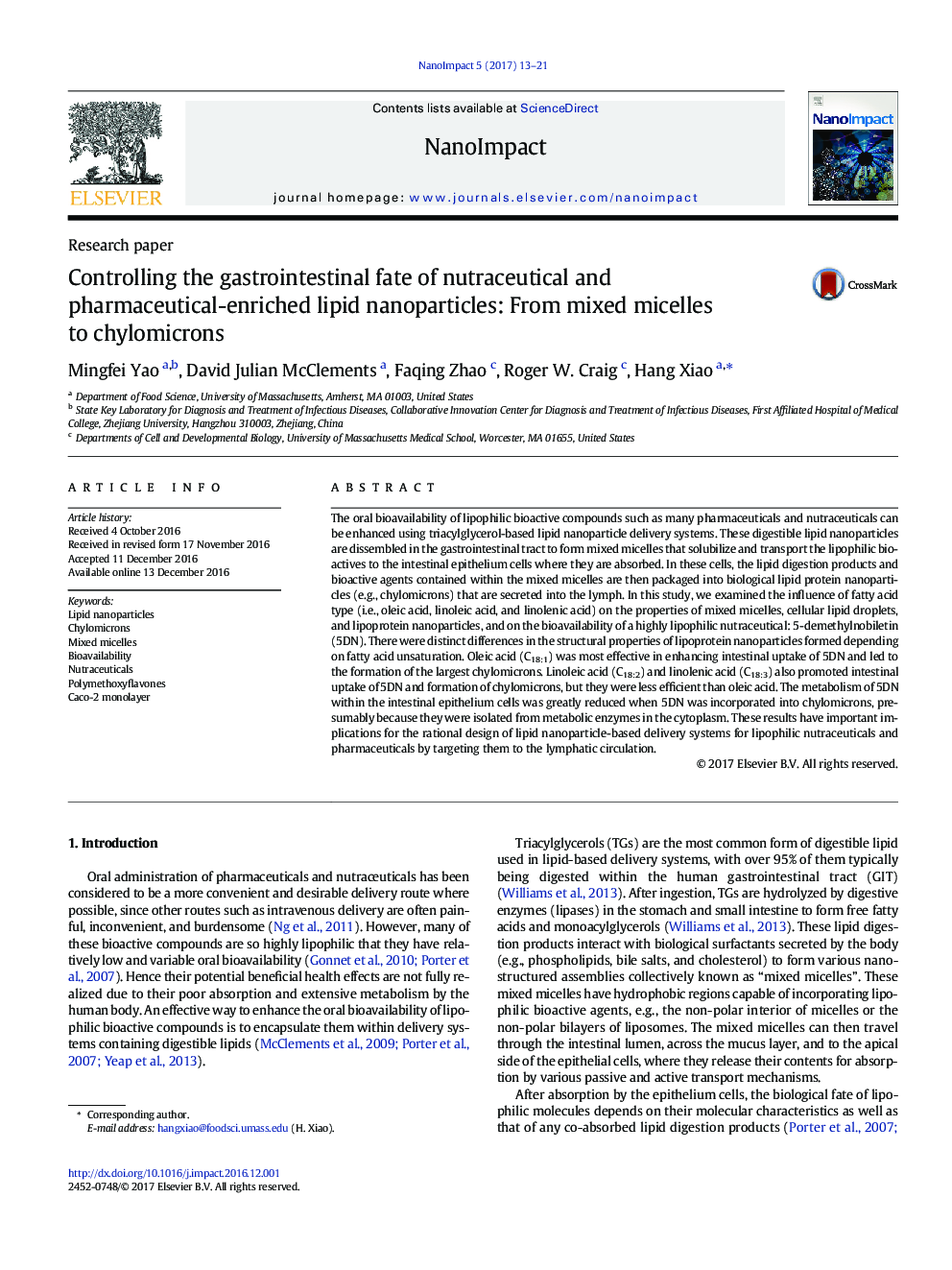| Article ID | Journal | Published Year | Pages | File Type |
|---|---|---|---|---|
| 5560709 | NanoImpact | 2017 | 9 Pages |
•Mixed micelles containing unsaturated fatty acids enhanced trans-intestinal uptake of 5DN, a lipophilic compound.•Fatty acids with different degree of unsaturation showed different ability in enhancing trans-intestinal uptake of 5DN.•Different degree of unsaturation of fatty acids influenced the production and morphology of chylomicrons.•Lipid droplets and chylomicrons separated 5DN from drug-metabolizing enzymes and promoted its lymphatic transport.
The oral bioavailability of lipophilic bioactive compounds such as many pharmaceuticals and nutraceuticals can be enhanced using triacylglycerol-based lipid nanoparticle delivery systems. These digestible lipid nanoparticles are dissembled in the gastrointestinal tract to form mixed micelles that solubilize and transport the lipophilic bioactives to the intestinal epithelium cells where they are absorbed. In these cells, the lipid digestion products and bioactive agents contained within the mixed micelles are then packaged into biological lipid protein nanoparticles (e.g., chylomicrons) that are secreted into the lymph. In this study, we examined the influence of fatty acid type (i.e., oleic acid, linoleic acid, and linolenic acid) on the properties of mixed micelles, cellular lipid droplets, and lipoprotein nanoparticles, and on the bioavailability of a highly lipophilic nutraceutical: 5-demethylnobiletin (5DN). There were distinct differences in the structural properties of lipoprotein nanoparticles formed depending on fatty acid unsaturation. Oleic acid (C18:1) was most effective in enhancing intestinal uptake of 5DN and led to the formation of the largest chylomicrons. Linoleic acid (C18:2) and linolenic acid (C18:3) also promoted intestinal uptake of 5DN and formation of chylomicrons, but they were less efficient than oleic acid. The metabolism of 5DN within the intestinal epithelium cells was greatly reduced when 5DN was incorporated into chylomicrons, presumably because they were isolated from metabolic enzymes in the cytoplasm. These results have important implications for the rational design of lipid nanoparticle-based delivery systems for lipophilic nutraceuticals and pharmaceuticals by targeting them to the lymphatic circulation.
Graphical abstractMixed micelles facilitate the uptake of lipophilic bioactive compounds (e.g., 5DN) into enterocytes. The metabolism of 5DN is reduced in the enterocytes when it is incorporated within lipid droplets and chylomicrons (CMs). CMs together with 5DN enter lymph circulation instead of portal blood, which bypasses first pass metabolism in the liver. All of above contributes to enhanced bioavailability of 5DN.Figure optionsDownload full-size imageDownload high-quality image (118 K)Download as PowerPoint slide
